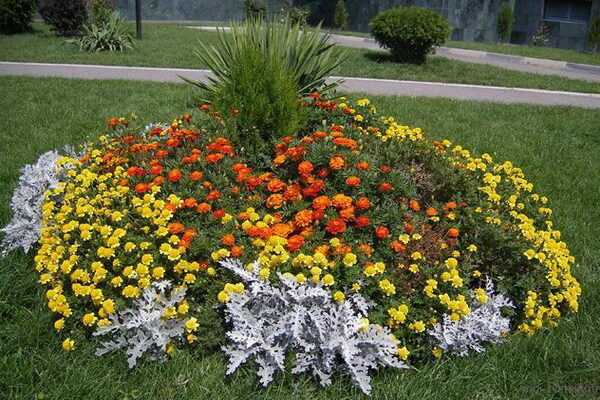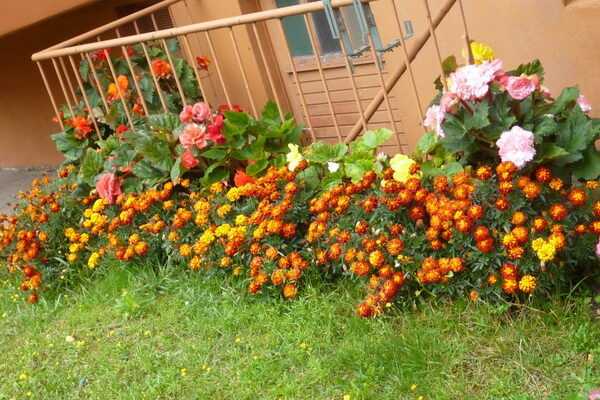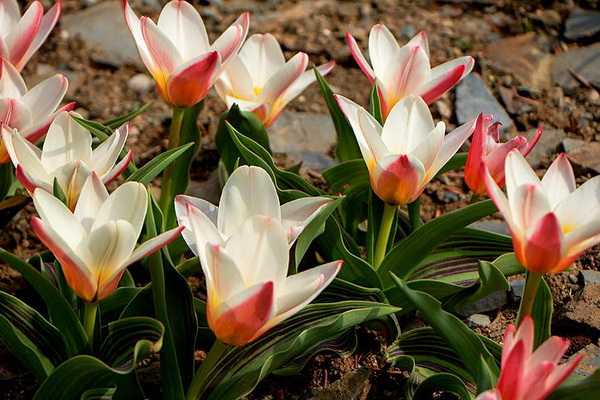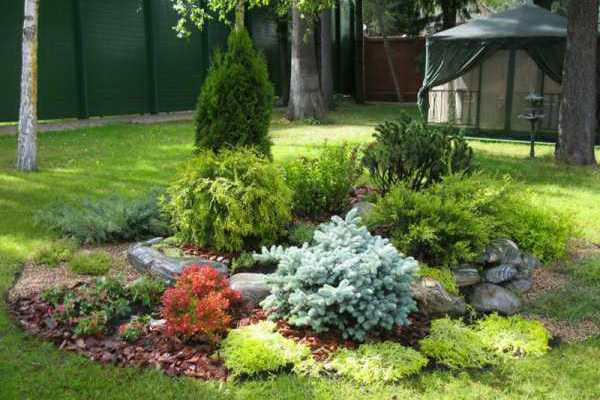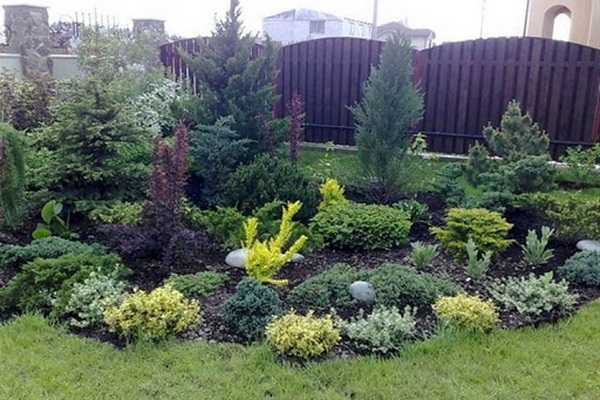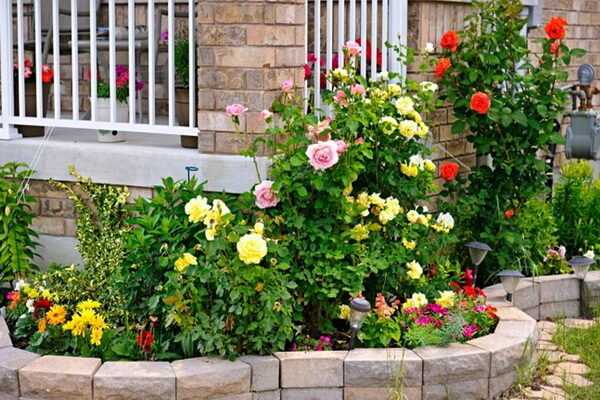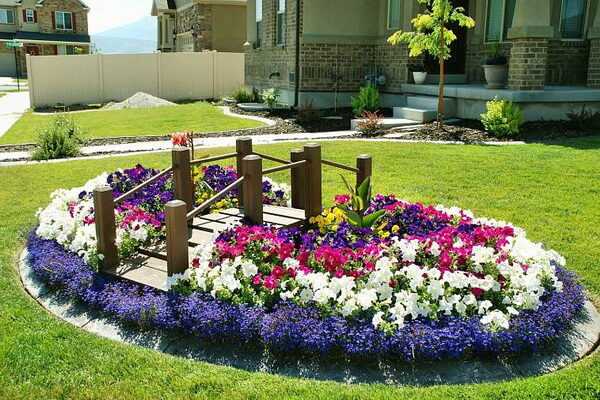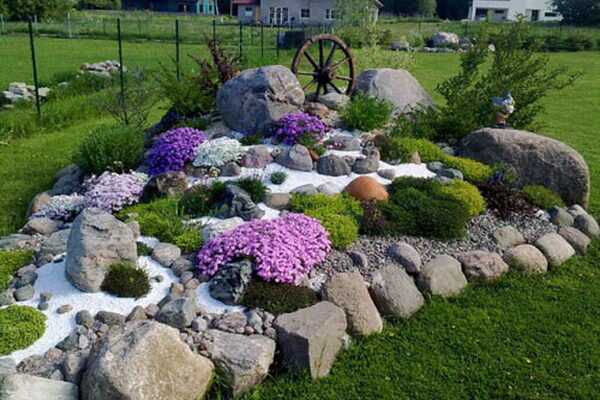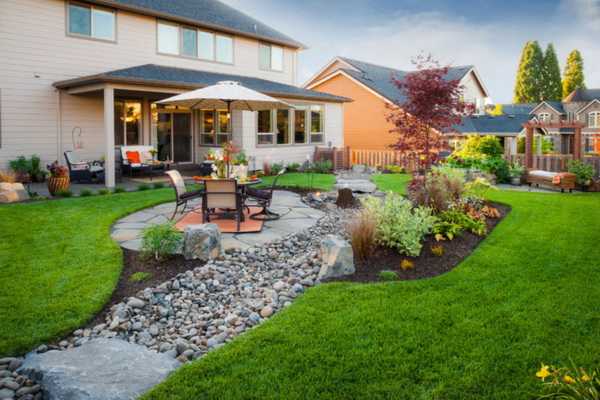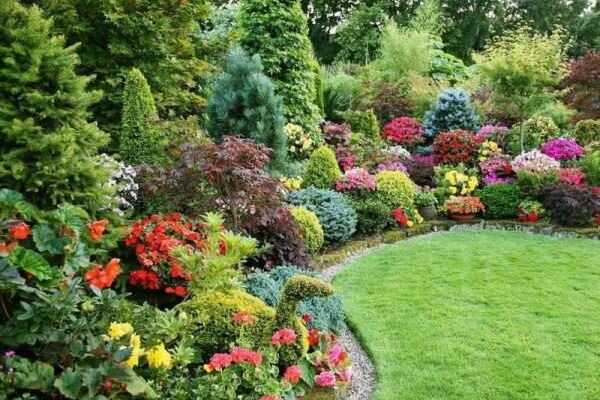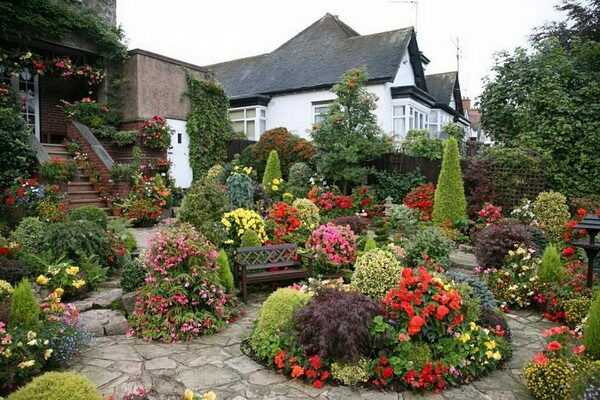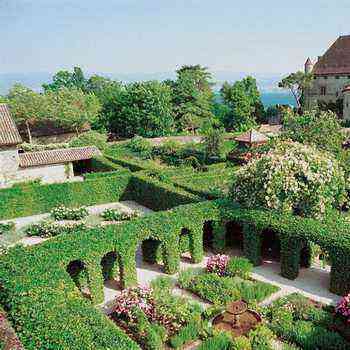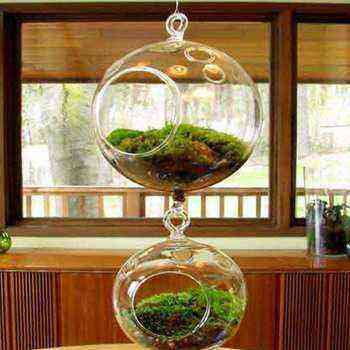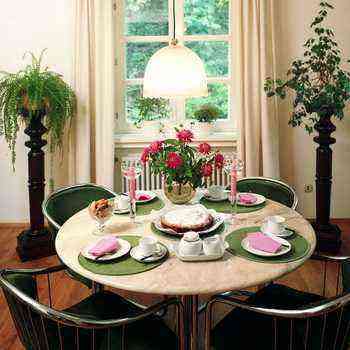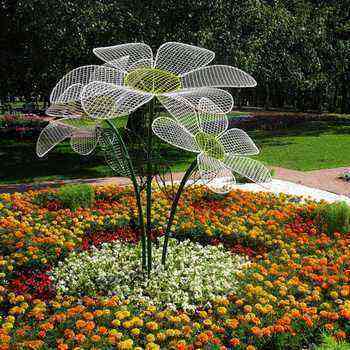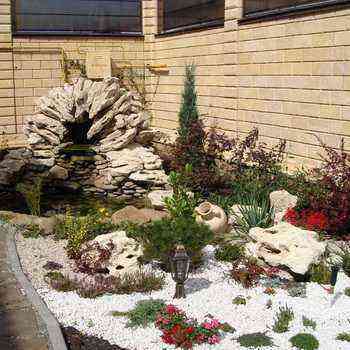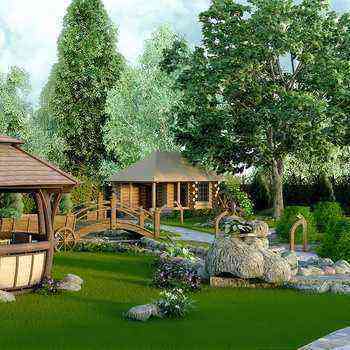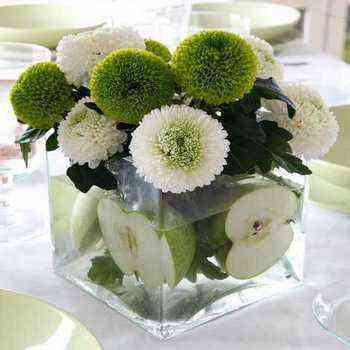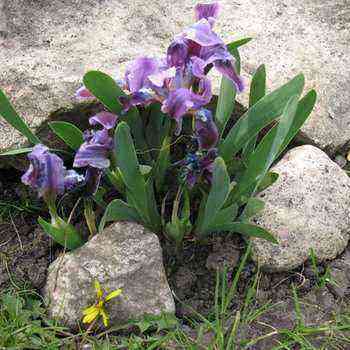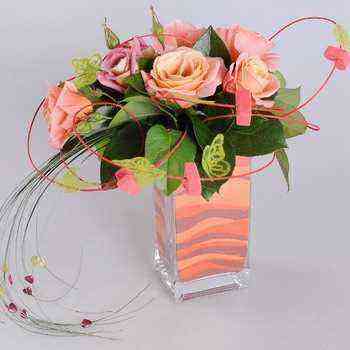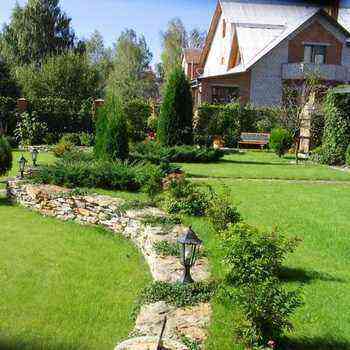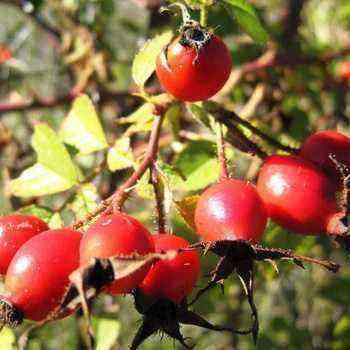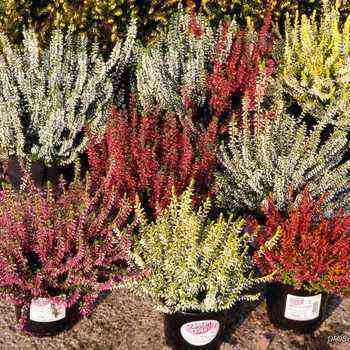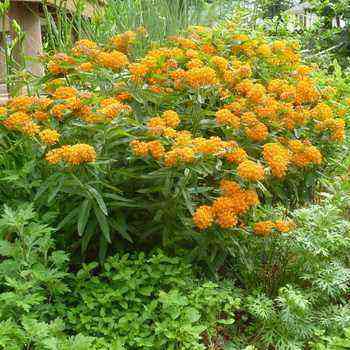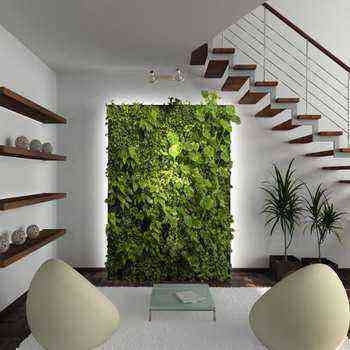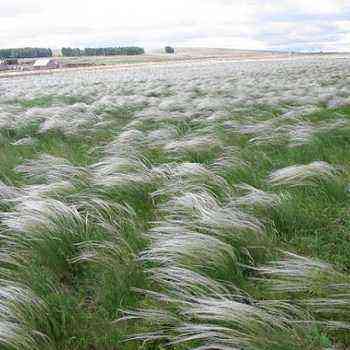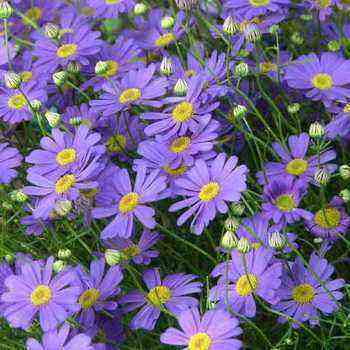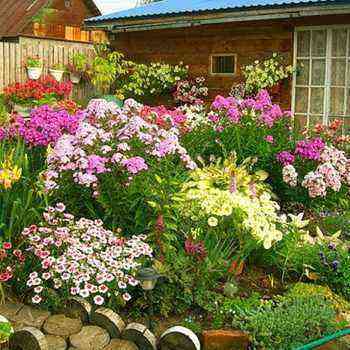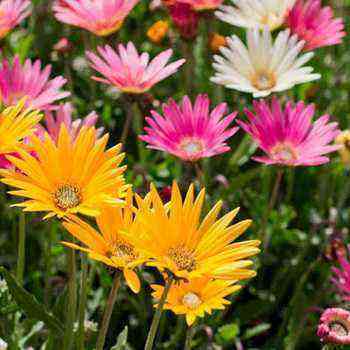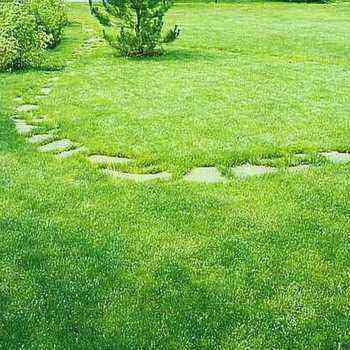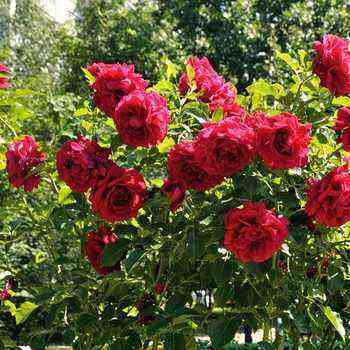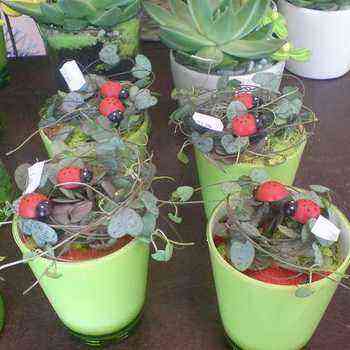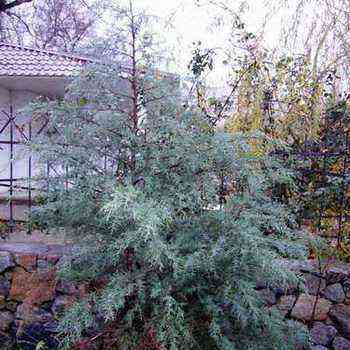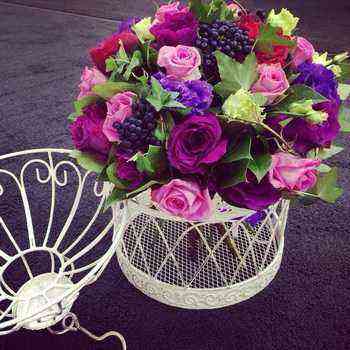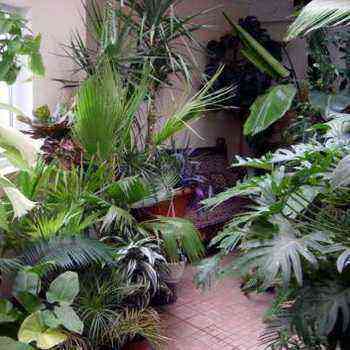
How to choose
Landscape types of flower arrangements are more varied and complex than regular ones. The group has a free outline and is intended for viewing from all sides. According to the composition of plants, a group can be pure (from plants of the same species) or mixed (from plants of different species).
For example, you can make a group of marigolds: tall erect, lower rejected or dissected-leaved and low varieties of rejected marigolds. No less decorative is a group of varieties of phlox paniculata of various heights, made in a white-pink-lilac range.
It is rather difficult to select a group of plants of different species, since in this case it is necessary to take into account not only the parameters of ecological compatibility, but also the height of the plants, the timing of their flowering, the peculiarities of decorativeness (the shape of the leaf blade and inflorescence, color).
In small gardens, groups can replace other types of flower arrangements, including more bulky and complex mixborders. The principle by which the assortment for the group is selected is the same as the principle of compiling a mixborder. Only the groups are smaller in size and in the range of plants, and therefore compositional flaws are more noticeable in them.
By the time of use, groups of flowers and shrubs in the design of the site can be seasonal and permanent. Seasonal groups are unusually spectacular, since the flowering of plants in them falls on a certain period (spring, summer or autumn). Groups of spring flowering are especially effective, since at this time there are still very few flowering plants. Bulbous cultures and early flowering biennials (Viola Vittroka, daisies, forget-me-nots) are soloing. Compositions of plants of these two groups are very beautiful.
For example, pink Kaufman tulips lined with pale blue forget-me-nots; or tall red tulips with yellow stripes as a background for lower yellow daffodils, which, in turn, are lined with an even lower Siberian Scylla. But after the flowering of this splendor, it will be necessary to completely replace the bulbous ones with flowering annuals, creating a new group from them.
Height
After determining the existing environmental factors, they begin to select plants in height.
Selection of plants by height. Of course, the plants in a group can be of the same height, but plants of different heights look more interesting (the so-called “back”, “middle” and “foreground” plans). When choosing tall plants, try not to exceed 150 cm in height. This is a general rule when choosing plants for any type of flower arrangement. If the plants are taller, it is quite difficult to match them with medium and foreground plants, i.e. observe a smooth transition from one layer of plants to another.
When choosing plants by height, it is necessary to take into account some rules, in particular the rule of proportionality. For example, there is a group of volzhanka dioica (height about 1,5 m), bergamotus heart (40-50 cm) and primrose Julia (10 cm).
A beautiful group did not work out, since there is no smooth transition of heights between plants and, accordingly, the unity of the group. Therefore, it is better to select plants by height using the principle of the “golden ratio”, or the Fibonacci series. The numbers in this row are arranged in such a way that the two previous numbers add up to the next third (3: 5: 8: 13: 21, etc.). You can take any three numbers of this row and calculate (approximately) the height of each tier in your flower garden. If you use a ratio of 3: 5: 8, then the tallest plants in the flower garden should make up 8 parts of this ratio. Let’s say we focus on a height of about 160 cm. This means that one part of this proportion will be equal to 20 cm (160: 8 = 20). Therefore, the height of the middle tier of plants should be approximately 100 cm (20 x 5 = 100), and the height of the lower tier -60 cm (20 x 3 = 60). Using the given numerical series, it is possible to calculate the height of plants not by tiers (high, medium, low), but for each individual species in the group, only the number of numbers in proportion in this case should correspond to the number of species.
This means that in our example, in order to correct the situation, a female cochidian (100 cm) and a Siebold host (50-60 cm) can be added to the Volzhanka, and Julia’s primrose can be used as a ground cover plant, providing a smooth transition from the vertical surface of the composition to the horizontal one (ground cover plants are not included in the calculation of heights).
This rule cannot be taken literally. Strictly following the calculated parameters, we will never select an assortment that strictly corresponds to these figures. After all, one cannot “cut off the excess and tighten the missing”. The obtained figures can only approximately indicate the ratio of heights, it is only important that there is no difference in height as in the first example.
By decorativeness
The flower group consists of a small number of species, therefore, when selecting an assortment, it is necessary to select plants that have a stable decorative effect, retaining their attractiveness from spring to autumn. If, after flowering, the leaves of the plant (oriental poppy) partially or completely disappear, the remaining species will not be able to close the resulting “gap”, and the group will lose its charm.
If the flower arrangement in a group planting is represented by elements of different types (mixed group), the task of selecting plants becomes much more complicated, since several factors have to be taken into account simultaneously. In the first place is the attitude of plants to growing conditions. Whenever possible, plants should meet uniform environmental requirements for illumination, humidity, soil conditions and other factors.
By flowering time
It is necessary to select an assortment for a flower group taking into account the timing of flowering.
The group blooms continuously, throughout the season (early spring flowering can be disregarded, since most spring species are unstably decorative – bulbous, the dicenter is magnificent, plantain doronicum, primroses, etc.). In addition, when most of the spring species bloom, the rest of the perennials are in the regrowth phase and do not affect the general appearance of the group. Continuity of flowering does not mean that all plants should bloom from June to September. After all, most perennials have limited flowering periods: two, maximum three to four weeks. In this case, when compiling a group, one should be guided by the fact that one plant blooms in June-July, another in August, and the third in September. And in this case, one can take into account or not take into account the color characteristics of plants and the shape of their flowers and inflorescences. For example, all species of a group can be variably colored, but since the flowering time does not coincide, the combination of colors is not the main factor and does not affect the selection of the assortment. In this case, in order for the group to be constantly decorative, you will have to pay special attention to the shape and size of the leaf blades, to their color, to the habit (shape) of the bush itself. Given the short duration of flowering, the shape of the leaf blades and the shape of the bush itself are even more important than flowers and inflorescences.
On the other hand, an additional principle of chromaticity can be taken into account when selecting an assortment for a continuous flowering group. For example, throughout the season, plants in a group can have a certain color range (usually single-color plants are selected) – white, blue, pink, red, etc. You can also take into account the shape of the inflorescence, for example, pick up some “daisies”, or “bells”, or “panicles” in a group, i.e. plants with the same shape of flowers or inflorescences. At the same time, it is necessary to remember about stable decorativeness (both before and after flowering, the group should look interesting due to the shape of the leaf blades or the habit of the bush).
The group blooms at the same time (for example, late June – early July). In this case, in addition to taking into account environmental factors, the stability of decorativeness and the timing of flowering, you should definitely pay attention to the color and shape of flowers and inflorescences.
Landing rates
Very often the question arises about the planting scheme, in other words, about the distance that must be maintained when planting plants (sometimes they talk about the planting rate, i.e. the number of plants per 1 m2). In principle, these are the so-called reference data, they can be taken from books. But often in the literature, such data are very contradictory, since some authors indicate the planting rate for small divisions, while others refer to the future picture, i.e. on adult plants.
Therefore, you can approximately use the planting standards, calculated based on the height of the plants and the size of their bush (volume). So, tall plants (100-120 cm) are planted at the rate of 2-3 (up to 5) pieces per 1 m2, medium-high (40-90 cm) – 4-6 (maximum 5-9) pieces, low (20-40 cm ) – 7-9 (maximum 10-12 pieces) and dwarf (5-20 cm) – 16-20 pieces. It should be remembered that on poor sandy soils the planting rate increases slightly, and on rich humus soils it decreases. In addition, the planting rate depends on the splendor of the bush itself. So, for example, the planting rate of Siberian iris will be slightly higher than the hybrid daylily (with the same bush height), since these species form bushes of different densities (strict, narrow – in iris and wide, spreading – in daylily).
Those who are working on group planting of flowers for the first time should be reminded that a group will become truly beautiful only in the second or third year after planting (depending on the size of the divisions).
